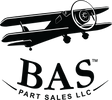This IAI 1124 Westwind Aircraft is located in the airfield at BAS Kansas City




List of available parts from this IAI 1124 Westwind:
- Nose Cone
- Nose Access Panel LH
- Nose Access Panel RH
- Nose Landing Gear Strut Assy
- Nose Landing Gear Doors
- Windshields
- Pilot DV Window
- Pitot Tubes
- Windshield Wipers
- Main Landing Gear Strut Assy LH
- Main Landing Gear Strut Assy RH
- Main Landing Gear Door LH
- Main Landing Gear Door RH
- Main Landing Gear Actuators
- Aileron LH
- Aileron RH
- Flap LH
- Flap RH
- Tip Tank LH
- Tip Tank Tailcone LH
- Tip Tank RH
- Tip Tank Tailcone RH
- Recognition Lights LH
- Recognition Lights RH
- Inlet Assy LH
- Inlet Assy RH
- Cowling LH
- Cowling RH
- Thrust Reverser LH
- Thrust Reverser RH
- Horizontal Stabilizer
- Elevator LH
- Elevator RH
- Elevator Trim LH
- Elevator Trim RH
- Vertical Stabilizer
- Rudder
- Rudder Trim
- Tail Cone
- Cabin Door Assy
- Emergency Exit Door
- Pilot Seat
- Co-Pilot Seat
- Pilot Control Yoke
- Co-Pilot Control Yoke
- Throttle Quadrant
- Landing Gear Selector
- Glareshield
- Various Instrument
- Overhead Switch & Breaker Panels
- SunVisors
- Refreshement Center Forward RH
- Cabin Chairs (6)
- Fold Out Executive Table
- Cabin Overhead Panel
- Cabin Side Panels
- Cabin Pressure Outflow Valves
The IAI 1124 Westwind: A Legacy in Light Business Jets
Early Development and the Aero Commander Legacy:
The Westwind's story begins in the United States with Aero Commander. Initially, their design was a twin-propeller aircraft, which evolved into the 1121 Jet Commander, a pioneering light business jet. First flying on January 27, 1963, it incorporated twin GE CJ610 turbojets, marking a significant step towards enhancing speed and efficiency in the business aviation sector. Type certification followed on November 4, 1964, leading to the first deliveries in early 1965. The initial design underwent refinements, notably a 2.5-foot fuselage extension and increased payload capacity, as evidenced by the second prototype’s first flight in April 1964.
Acquisition by IAI and the Rise of the Westwind:
However, Aero Commander's acquisition by North American Rockwell created a conflict. Rockwell already produced the Sabreliner, an executive jet, and antitrust laws prevented them from maintaining two competing aircraft in production. Consequently, Rockwell sold the Jet Commander program to IAI in 1968. This marked a pivotal moment, transferring the design and production to Israel. Under IAI's leadership, the aircraft underwent significant transformations, evolving beyond its American roots.
The 1123 and 1124 Westwind: Innovations and Enhancements:
IAI's modifications led to the creation of the 1123 Westwind. Improvements included stretching the fuselage, increasing maximum takeoff and landing weights, and incorporating double-slotted flaps and drooped leading edges to improve performance. Further modifications incorporated tip tanks, enhancing the aircraft's range. However, the most significant change came with the re-engining. The original GE CJ610 turbojets were replaced by more fuel-efficient Garrett TFE731 turbofans, a critical upgrade for efficiency and cost-effectiveness in operation. This model became the 1124 Westwind.
Numerous other enhancements were implemented: a dorsal fin for improved stability, revised engine pylons and nacelles, and further weight increases. These iterative improvements reflected IAI's commitment to optimizing the aircraft's capabilities, improving handling characteristics, and aligning its features with market demands.
The Westwind II (1124A) and Beyond:
IAI continued its development efforts, resulting in the Westwind II (1124A) which debuted in 1980. This model included a redesigned wing center section and the addition of winglets on the tip tanks, further improving fuel efficiency and overall performance. The Westwind II marked a successful culmination of several design iterations and a substantial enhancement over its predecessor. The final Westwind rolled off the assembly line in 1987, marking the end of its production run with a total of 442 units. In 2018, the prices of older models reflected their value, ranging from $300,000 to $700,000.
Specific Design Features and Performance:
The Westwind's design incorporated some unique elements for its class. Although conventionally arranged with twin engines mounted on the rear fuselage, its mid-wing design differed from the low-wing configurations prevalent in the business jet market. Performance data from the 1124A (Westwind II) reveals a cruise speed of 723 km/h (449 mph) and a service ceiling of 13,725 m (45,000 ft), impressive figures for a light business jet of its era. The range, with maximum fuel and four passengers, extended to 5,385 km (3,346 mi).
Operational History and Impact:
The Westwind served both civil and military operators worldwide. Operators range from corporations and private operators to government agencies like the Israeli Air Force (which adapted it into the maritime patrol aircraft, the IAI Sea Scan). Its presence in diverse sectors demonstrated its adaptability and the confidence placed in its capabilities. The aircraft has also left its mark on aviation safety discussions, particularly its record of accidents and incidents. Reports of hull-loss accidents and related fatalities underscore the necessity of continuous safety improvements and stricter maintenance protocols within the aviation industry.
Conclusion:
The IAI 1124 Westwind’s legacy goes beyond its technological specifications. It’s a compelling narrative of international collaboration, adaptation, and the enduring quest for improvements in light business jets. From its American origins to its evolution under IAI, the Westwind showcases innovation, adapting to evolving market demands and technological advancements. While its production has ceased, its contribution to business aviation, and its influence on subsequent jet designs, remain significant aspects of aviation history.
Israel Aerospace Industries (IAI)
Early Years (1953-1960s):
- Founded in 1953 as Bedek Aviation Company under the initiative of Shimon Peres, then director-general of the Ministry of Defense. Its initial purpose was to maintain Israeli Air Force aircraft.
- Initially employed 70 people and recruited Al Schwimmer as its founder and first president.
- Began manufacturing its first aircraft in 1959, the Fouga CM.170 Magister (locally called Tzukit), a V-tailed twinjet trainer. The Tzukit served as the IAF's primary trainer for 50 years and saw combat action in the Six-Day War.
Growth and Diversification (1960s-1980s):
- In response to a French embargo, IAI developed its own fighter aircraft, starting with the IAI Nesher (a derivative of the Mirage 5) and followed by the IAI Kfir.
- Developed the Gabriel anti-ship missile and an inexpensive aircraft radar, both of which became successful export items.
- Entered the Unmanned Aerial Vehicle (UAV) market in the 1970s with the IAI Scout.
- Developed a significant maintenance, repair, and overhaul (MRO) business.
- Acquired North American Rockwell's Jet Commander series of business jets, leading to the development of the IAI Westwind and Astra aircraft lines.
- Launched the ambitious Lavi fighter jet program in 1980, but it was canceled in 1987 due to budgetary concerns.
Expansion and Internationalization (1990s-2000s):
- Entered the space industry with the AMOS communications satellites, Ofeq observation satellites, and the Shavit space launcher.
- Became a world leader in upgrading aircraft, modernizing planes such as the Vietnam-era McDonnell Douglas F-4 Phantom II.
- Attempted to enter the very light jet (VLJ) market with the Avocet ProJet, but the project was ultimately unsuccessful.
- Secured significant international contracts, including a deal with India to install AWACS systems on Ilyushin Il-76 transports.
- Changed its name from Israel Aircraft Industries Ltd. to Israel Aerospace Industries Ltd. in 2006 to reflect its broader activities.
Continued Growth and Innovation (2010s-Present):
- Continued to develop and sell various defense systems, including UAVs, missiles, and air-to-air missiles.
- Expanded into the market for anti-drone systems.
- Maintained a strong presence in the MRO sector for both civil and military aircraft.
IAI 1124 Westind Parts Available from BAS Part Sales
Industry Leading 90-Day Money-Back Guarantee
You may return parts or request a replacement within 90 days of the purchase date with no penalty. We'll also pay the return shipping costs if the return is a result of our error (if you received an incorrect or defective item, etc).
We do not accept returns on anything marked CORE, Fuselages, or anything stating "No Returns Accepted".
If the return is past 90 days from the date the item was delivered, you may incur a restocking fee. Each return is handled on a case-to-case basis, and we do our best to be fair and reasonable.
Once we receive your returned parts, you should expect to receive your refund within a week or so. In most cases, you will receive a refund quickly.
If you need to return an item or want a replacement, fill out the form HERE with your order number, details about the product you would like to return, and the reason for the return. We will respond quickly with instructions for how to return items from your order.
Our 90-day guarantee is our commitment to treating our customers honestly and fairly. We put every part through a rigorous process before we make it available for sale. Despite our best efforts, sometimes we do not have the capability to test certain items, or we might miss something during the inspection process.
Condition Codes for BAS Part Sales Inventory
As-Removed:
Part removed from aircraft in its original, unaltered state. Most of the inventory available from BAS Part Sales is in As-Removed condition. We removed it from the aircraft in working condition and expect it to pass inspection. As-Removed items come with our 90-day Money-Back Guarantee. Read More
Core:
A non-functioning or damaged item that can be used for parts or possible repair. We DO NOT offer refunds on core items. These items are listed with "Core" in the title and typically have details in the product description related to what we found wrong with it.
Overhauled:
An as-removed item that has been sent to a shop for repair or rebuild. These items, of course, come with our 90-day money-back guarantee.
NOS - New Old Stock:
Item that is factory new but has been stored for a period of time that is usually past stock limit date. These items also come with our 90-day money-back guarantee.
Certifications & Documentation:
If an item is offered for sale with an 8130, STC, or other documentation, that detail is typically notated in the product title and the description. If it is not notated, then BAS cannot provide any certification for that item.
Meet YOUR Parts Team
The BAS Sales Team is stacked with knowledge and expertise from every aspect of the aircraft salvage business. Let our team of Experts help you find the right part the first time.
You can reach the sales department during business hours - 7:30 am to 4 pm Mountain Standard Time - by calling 970-313-4823 or via email at [email protected]
We will promptly assist in any way possible, such as verifying the right part or part number, taking measurements or additional pictures, discussing or arranging shipping and transit prior to your purchase, or anything else you need to be confident that you are buying the right part from the right people.

Matt Rangel - Colorado Sales Lead
BAS Part Sales Colorado
970-414-7303 Direct

Mike Rangel
BAS Part Sales Colorado
970-414-7304 Direct

Geoff Watkins
BAS Part Sales Colorado
970-414-7154 Direct

Juan Castro - Missouri Sales Lead
BAS Part Sales Kansas City
816-690-8800

Matt Brewe
BAS Part Sales Kansas City
816-690-8800

Mike Hutfles
BAS Part Sales Kansas City
816-690-8800
























